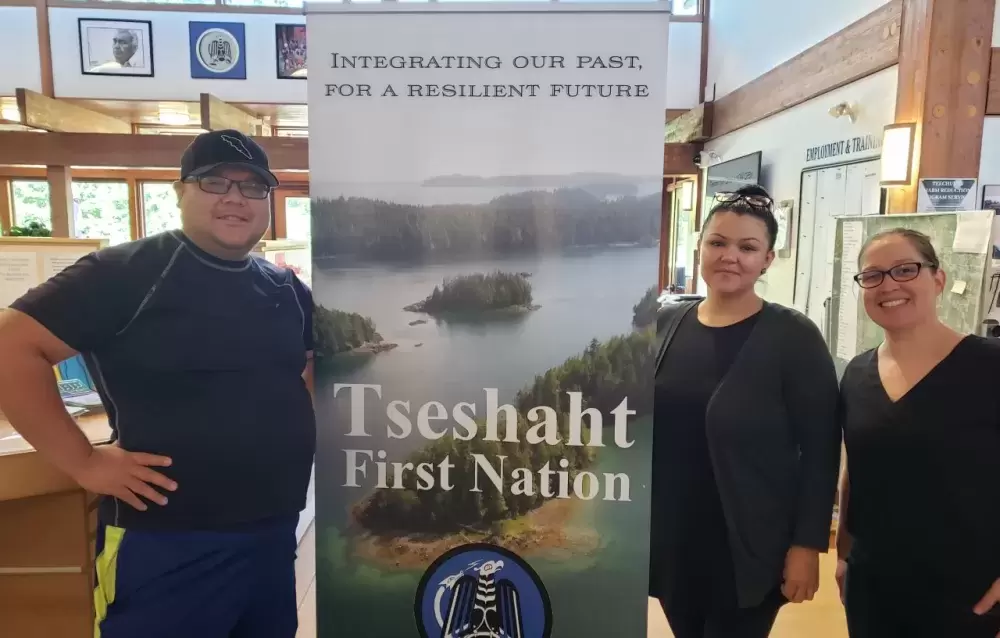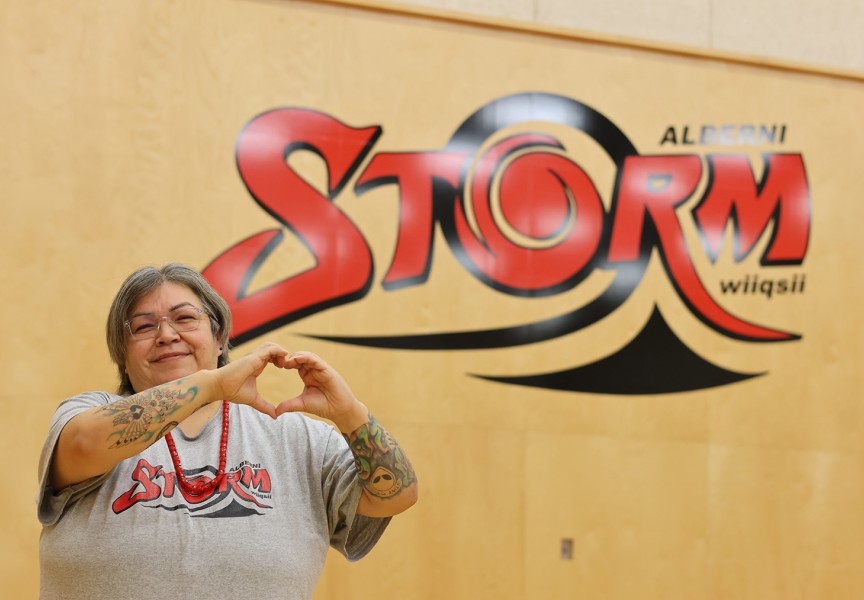Tseshaht First Nation is implementing an innovative language program that is the first of its kind for the nation.
Informed by Tseshaht community goals, the program’s top two priorities are to develop fluent speakers, as well as to archive and record the Nuu-chah-nulth language. The initiative is funded by the First Peoples Fund, the Nuu-chah-nulth Education Training Program (NETP), the Nuu-chah-nulth Economic Development Corporation (NEDC), and First Voices.
The language program team includes language coordinator Dawn Foxcroft, language worker Linsey Haggard, and data technician Grant Watts. Watts is currently working to increase content in the online Tseshaht First Voices Portal database, with a goal of adding a few thousand additional words and phrases.
“I’ve definitely used it quite a bit in my language learning and teaching,” said Foxcroft, of the Tseshaht First Voices Portal. “It’s been a useful tool for me. I’m sure it’s been a useful tool for many other people, so if we can build that up, that can also help people who are living away from the community, to have access to language and opportunities to learn.”
The team is busy setting up the new language house on Tseshaht First Nation land at 7000 Pacific Rim Highway. In September, beginners’ language classes will resume on Tuesday evenings from 6:30 to 7:30 p.m. They will also host monthly gatherings for fluent Nuu-chah-nulth speakers, providing a space to speak the language, support each other, and learn from each other.
“What we want to do,” explained Foxcroft, “is create this space for language ... that can hold up our language, that our nation has provided. We want to make it beautiful and comfortable, so that it’s a space that can really honour the language and honour the learners, and especially honour our speakers who have carried our language forward and have fought to keep the language.”
The language team is creating a long-term strategy for fluency. Other communities in the province as well as elsewhere in Canada can provide models for what successful programming looks like.
“There are things that are going on out there in the world that are working,” reflected Foxcroft. “So what does it look like for us and Tseshaht to create speakers, and what would work in our community?”
The Royal British Columbia Museum (RBCM) has a permanent exhibit in Victoria, Our Living Languages: First Peoples’ Voices in BC. Foxcroft recalls visiting the Victoria-based permanent exhibit with her university graduate class.
“It’s always great to promote and educate about Indigenous languages and to hold them up in any way possible,” she stated. “It was really powerful hearing family members’ voices, seeing your language, seeing the diversity.”
RBCM has now developed two travelling installments of the same exhibit, one of which is currently showing in the Alberni Valley Museum (AVM). The exhibit, which opened on National Indigenous Peoples Day and is a collaboration between RBCM and the First Peoples’ Cultural Council, will run until Oct. 5. It is a lead-up to a reconciliation exhibit initiated by School District 70, which will be presented at a later date. Between now and January, there will be many First Nations-focused exhibits, programs, and events, explained Shelley Harding, AVM education curator.
Through film, photographs, and audio, the Living Languages exhibit displays the language revitalization work being done in British Columbia First Nations communities. Kirsten Smith, collections curator at the Alberni Valley Museum, was impressed to learn how many First Nations languages there are in British Columbia.
“It was just the norm to us,” she said, referring to the diversity of British Columbia’s First Nations languages.
“Understanding the diversity of languages in B.C. alone is super valuable,” agrees Foxcroft. “I think it’s surprising to people...Of all the Indigenous languages in Canada,60 per cent are in B.C. alone. There’s a huge diversity of language here.”
Layla Charleson-Rorick, a Hesquiaht First Nation language learner, summarizes the intention behind work such as Tseshaht First Nation’s language program in a quote in the exhibit: “Although our languages are in a critical state, we choose not to see them as dying or about to fail. As long as people strengthen language through continued use and effort, there is really nothing that can stop its resurgence.”







